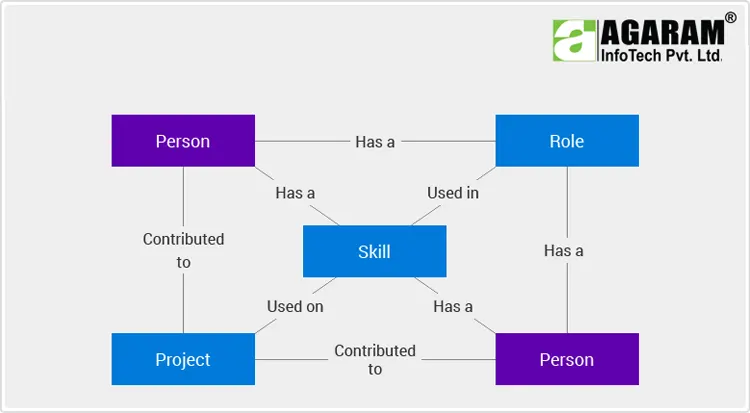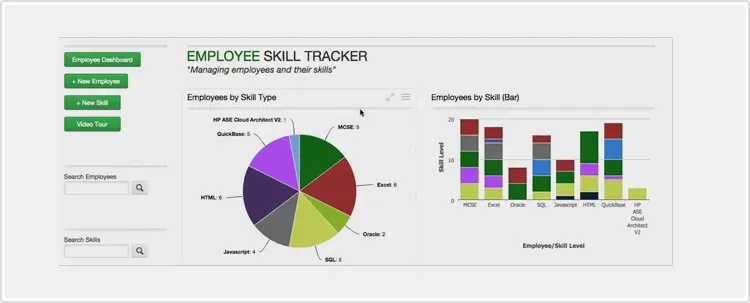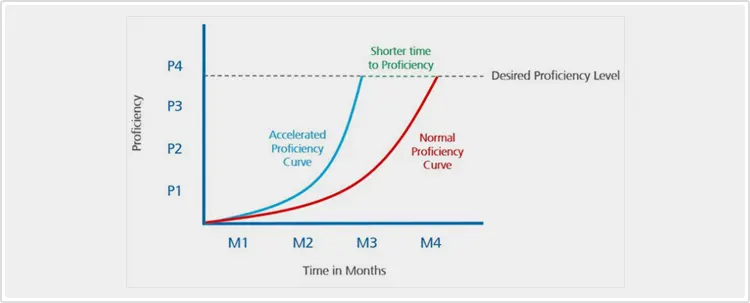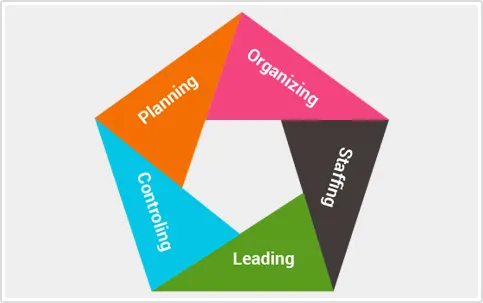The success of your business is all about how efficiently you manage the skills of your human resources, i.e. How effectively you Map, Process and Analyze Skills of people and jobs. This directly implies that you need a way to know who has what skill, and how good they are at it. This is easier said than done, since any organization be it big or small consists of employees will multiple skill sets, known competencies and hidden skills. To ensure that a business makes the most use of the skills or talents of its workforce it is essential that it adopts a system to keep their skills list organized. In this context an efficient employee skill management system offers great benefits to an organization, the top 5 of which are mentioned here
A firm's human resources are its most valuable asset, proper tools and measures to leverage the skills and abilities of employees is absolutely essential for the organization’s growth. Skill management system maintains a skills inventory that is up to date. It summarizes the skills, education, and experiences of the firm’s current workforce at any point of time.

This helps the management of the organization to make the best use of its asset – "The Human resource". On a regular basis every business needs to make certain strategic decisions regarding its work force like – Hiring of staff to meet the current and future needs of the various business unit, Identifying key employees for its new business venture or development project, Identifying replacements for employees and managers that depart from the organization, devise a workforce plan for the future strategic needs, etc. All this requires that the management be completely aware of the skill set of its current workforce. This is achieved by an efficient employee skill management system that offers “A Inventory of Employee Skills”. The management would assign roles and responsibilities to its workforce on the basis of their skills and relevant experience. Hence a clear and correct understanding of the skills, competency level in those skills, the relevant years of experience of the skill usage, the period of validity of relevant certifications and the need for honing those skills, all this information when available with the management ensures the right usage of its human resource.
Many a time businesses fail to perform not due to the lack of able resources but due to the allocation of the wrong resource for the right task. The first step in the planning of any project/business task should be the clear understanding of the available resources and a complete knowledge of the skills these resources have. This knowledge has to be acquired even before the business process is commenced or even agreed to start. The right resource-task mapping is absolutely essential to Capitalize on individual strengths to improve the collective results. Selecting the wrong people for a project could tank it even before it starts. An able employee skill management system generates skills reports for individuals, departments, or the whole company. These reports answer many vital questions like – What are the skills of the resource?, Does the resource possess any certification for the skills? What is the competency level?, etc. Before the formation of teams for any business activity, constituting the group based on the competency level of its individual players is absolutely essential. It is vital to pose questions like - How much of the required skills does our proposed team have? What are the skill gaps and how can we bridge them? These are just some of the skill-related questions that could arise in an organization, and it is vital to have a precise way to get the answers.

Businesses these days have to adapt quickly to a changing environment; so do the employees of the concern. To make the change smooth the foremost requirement is the knowledge of the skills of the company’s staff, their capabilities and the competencies they lack. Based on this information, the organization can organize trainings and seminars to hone the existing skills and fill the gaps in the skills. Both formal and informal learning sessions and learning interventions can be organized to enable the skill gap bridging. Early identification of the skills lacking by the resources of an organization and adequate measures to bridge those skill gaps clearly decides the pace at which the business grows. A skill management system helps to create individual development plans that target training where it's needed most. It benefits all the levels of workforce at an organization:
For any organization the rate at which it converts its workforce into a competent one is the rate at which it would obtain its maximum ROI. Employee competency effects user productivity, organizational efficiency, and project success.

It is a known fact that technology is evolving at an alarming pace and the competition in the market is extremely tough. Today businesses face these two major challenges in its path to success, which renders any known skill set obsolete in the blink of an eye. Workforces that contribute the most to organizational objectives are those who are better trained and are well equipped in the latest technologies, standards, or procedures. Accelerating time to competency requires a plan, commitment, time, and energy. An able Skill management system accelerates time to competence and ultimately improves the proficiency curve.

The value of tracking employee skills has been a fact that is acknowledged by all organizations, be it big or small. However an effective skill management system performs this better than the traditional methods and usage of Excel sheets to track work force skills. SMEs (small and medium size enterprises) too find the traditional methods ineffective and obsolete since it is not only time consuming and slow but is almost practically impossible to ensure that it reflects the up-to-date skill set of its current employees. An effective skill management system offers this vital functionality and hence plays a vital role in all the major business activities like - Planning of resources, Organizing, Co- Ordination of resources, and finally providing vital resource related reports for analysis and action.